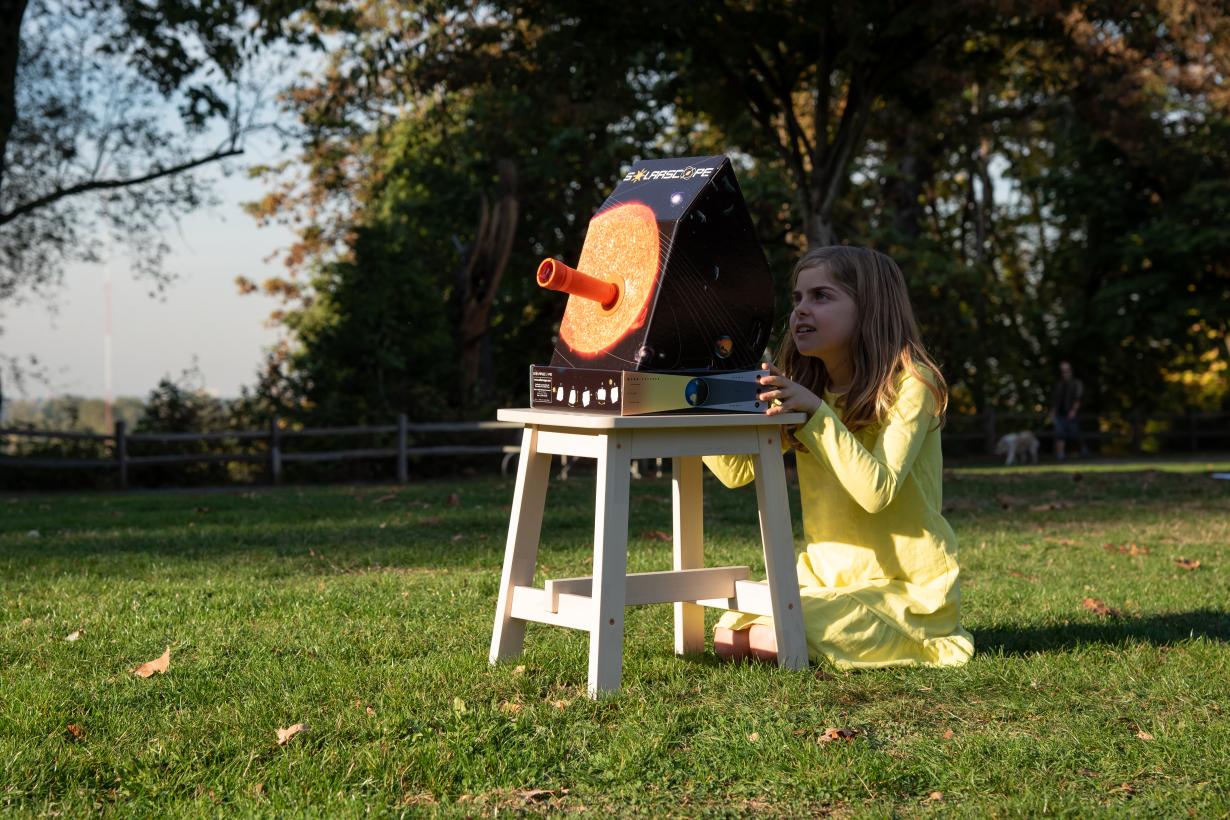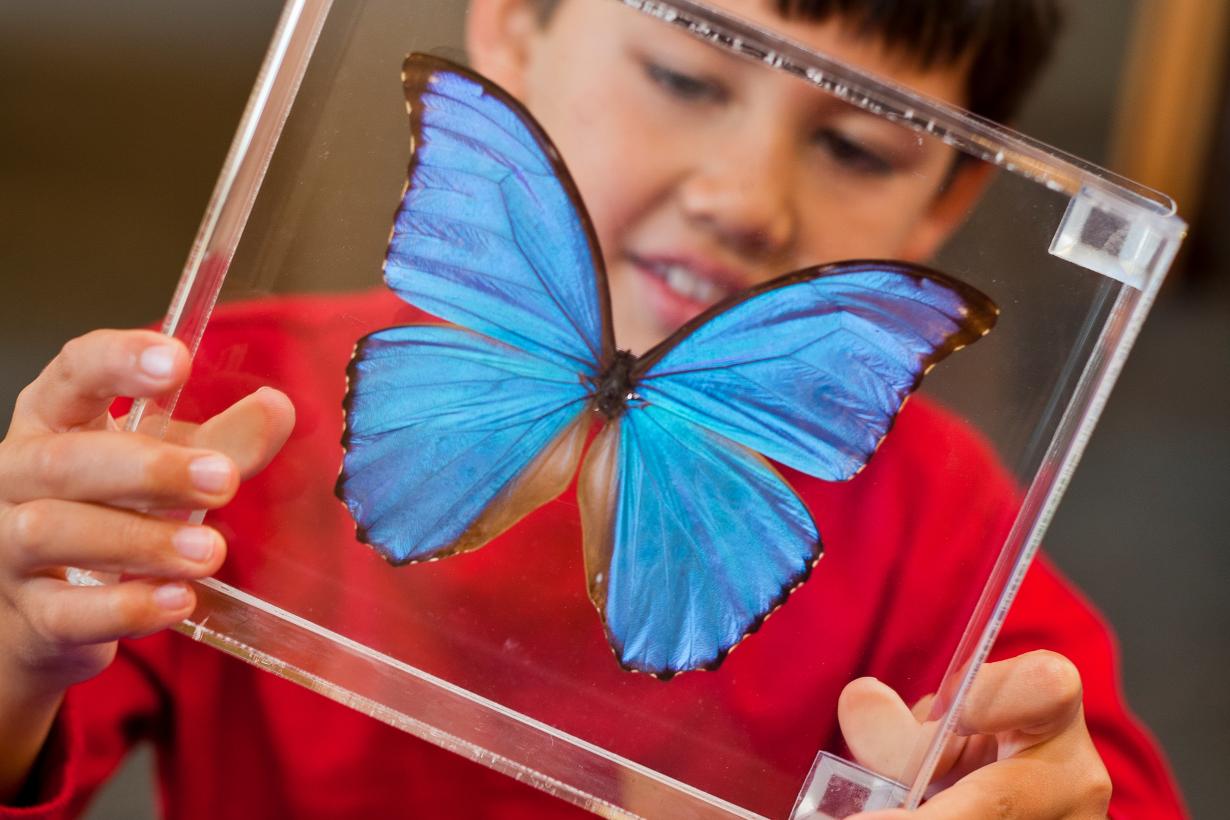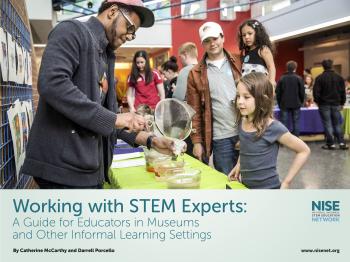
Light Activities
Light plays a central role in our lives. The electromagnetic (EM) spectrum includes wavelengths ranging from radio waves, microwaves, infrared, the visible spectrum that we perceive as light, ultraviolet, X-rays, and gamma rays. The main source of visible light on the Earth is our Sun, which provides virtually all the energy used by living things. These activities and resources cover some of the different ways we interact with and use light.
Featured Short hands-on activities
Search for more on light and optics
Exploring Properties - UV Bracelets

Exploring the Universe: Filtered Light

Exploring Materials - Liquid Crystals

Exploring Products - Liquid Crystal Displays

Exploring Properties - Invisibility

Exploring Nano & Society - Invisibility Cloak

Exploring Products - Sunblock

Exploring Materials - Thin Films

Exploring Structures - Butterfly

Exploring Materials - Nano Gold

Exploring Tools - 3D Imaging

Exploring Properties - Capillary Action

Exploring Materials - Stained-Glass Windows

Nanoparticle Stained Glass (cart demo)

Exploring Earth: Temperature Mapping

Exploring the Solar System: Observe the Sun

Exploring Materials - Polarizers

Butterflies
Videos

Butterfly Blues video

Zoom into a Blue Morpho Butterfly video

Nano and Me Videos

What’s Nano About Bubbles?

Invisibility Cloak video

A Little Bit of Sunshine
Longer Programs

Colors at the Nanoscale: Butterflies, Beetles and Opals

Organic Light-Emitting Diodes (OLEDs): Cart Version

Organic Light-Emitting Diodes (OLEDs): Classroom Version

Photolithography

Nanoparticle Stained Glass: classroom program

Dye Sensitized (Raspberry Juice) Solar Cell
Our Sun

Exploring the Solar System: Observe the Sun

Exploring the Solar System: Solar Eclipse

Solar Eclipses

Solar Science: Exploring Sunspots, Seasons, Eclipses, and More

Exploring the Solar System: Magnetic Fields
Shadows

Exploring Earth: Bear’s Shadow

Exploring Tools - Transmission Electron Microscopes

Exploring the Universe: Exoplanet Transits
Invisibility

Exploring Properties - Invisibility

Invisibility Cloak video

Exploring Nano & Society - Invisibility Cloak
Invisible Sunblock
Microscopes, Telescopes, and the Electromagnetic Spectrum

Microscopes and Tools for the Small

Telescopes and the Electromagnetic Spectrum
Online Workshop Recordings

Online Workshop Recording: Nano Brown-Bag: The International Year of Light 2015 - What's Nano about Light?

Online Brown-Bag: The Science Behind NanoDays 2013 - Part 1 (Recorded)
Annual Events
- International Day of Light - May 16
UNESCO resources https://www.unesco.org/en/days/light
SPIE resources https://spie.org/about-spie/international-day-of-light

More resources
- Universe Awareness (UNAWE) collection light activities
- HowToSmile.org collection of light activities https://www.howtosmile.org/resource-search/light
- SPIE the international society for optics and photonics posters and activities
- Tour of the Electromagnetic Spectrum video series, book, and EMS graphic
https://science.nasa.gov/ems - Optics 4 Kids https://www.optics4kids.org

Finding STEM Experts
- See the "Chemistry and Physics" and "Engineering, Technology,
Material Science, and
Nanoscale Science" section of Working with STEM Experts: A Guide for Educators in Museums and Other Informal Learning Settings
